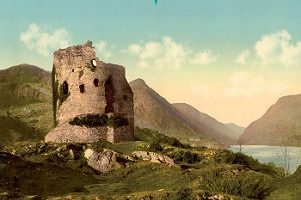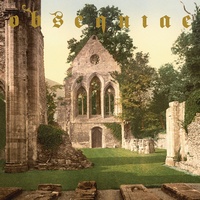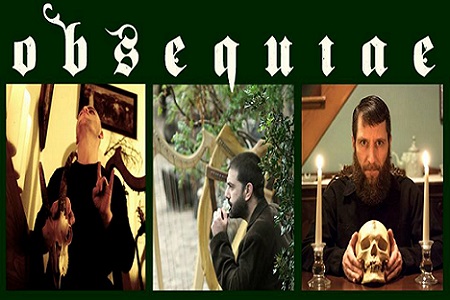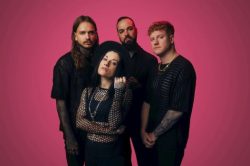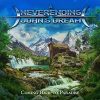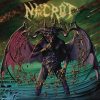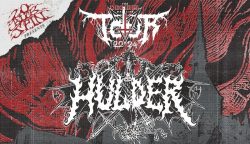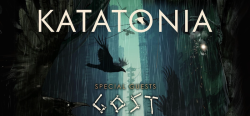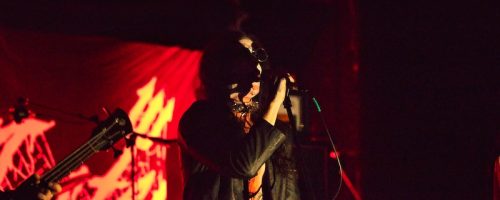Obsequiae – Medieval Metal Majesty
Monday, 1st June 2015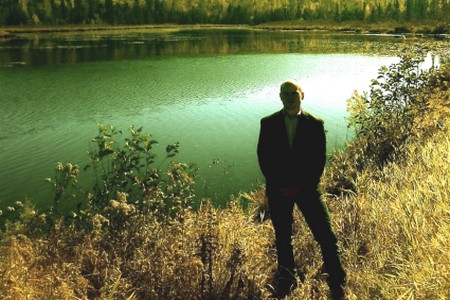
As mentioned in our recent review of Obsequiae’s sophomore effort, Aria of Vernal Tombs, there are few bands that capture one’s imagination and successfully transport them to a time that is no their own. Obsequiae have been doing this since their inception, and have a truly individualistic approach to metal to boot. There’s an eloquence about the band – everything from the lyrical approach, to the medieval harp, to the old school melodic death metal riffing employed has a sense of grandeur to it. Obsequiae is really one of the only bands currently going that can capture that early melodic death metal feeling and take it to a new level and purpose.
The band’s second album after a period of four years (their debut was pleasantly reissued by 20 Buck Spin last year), Aria of Vernal Tombs establishes Obsequiae as a force within the metal world. We were able to get a hold of guitarist/vocalist/bassist Tanner Anderson to get some further information on Obsequiae. Read on to see how the band produces and lays out the flow of their albums, Anderson’s love of Eucharist and early Dark Tranquillity (going so far as to show us his killer collection of early melodeath), and where his interest in the medieval comes from.
Dead Rhetoric: Listening to Obsequiae gives a genuine imaginative feeling of medieval times. How much time is put into the production and feel of the album?
Tanner Anderson: Quite a bit. Most of the time is put into pre-production demos (accounting for how much is written [both kept and discarded material] beforehand). It’s the rough sketches that take time, not the whole once it becomes realized. It’s important that the feeling of the music is consistent, retains atmosphere and translates to the production and how it will impact a listener. But as far as time spent fleshing out the work is concerned, it’s important to always keep writing. Continuing to explore new ideas and generally just keeping the momentum going. Whether or not the music is kept for the album isn’t as important. It’s through this exploration that new ideas come to the surface and the greater themes of a few songs come into focus and begin influencing the ones to follow. The music itself comes very natural and quick as far as writing. But the time spent stripping down songs or sacrificing a riff or even a great song for the sake of the whole (album) is what ultimately takes the most time. So shaping these songs in pre-production is where most of the energy and time goes.
Dead Rhetoric: Likewise, there are a number of instrumental pieces throughout your music. How do you plan the overall flow of the tracks?
Anderson: It’s just trial and error. Once the confidence is there with the songs themselves, it’s a matter of how the mood or excitement should build throughout the album. As far as planning goes, that just comes from foresight into what medieval tunes are best suited for the metal songs. The first two instrumental songs that I knew would work were “Ay que por muy gran fremosura” & “L’amours dont sui espris”. Vicente approached these songs as though there were breath in his strings. The sparse, contemplative and intricate dynamics of his playing really made them what they are. Despite my favorable bias toward medieval harp, I’ve still never heard anyone arrange or execute these songs with the amount of heart and thought that Vicente did for this album. Those songs carry the same sorrowful melodicism as most of the metal songs as well as the constant revisitation of melodic themes.
Dead Rhetoric: Obsequiae has always used some eloquent language in both album and song titles (not to mention the band’s name). Is it a conscious effort to not “dumb down” your music?
Anderson: I don’t know that it’s a conscious effort as much as a natural one. Poetic language isn’t explicit. So it benefits a listener because it offers them their own interpretation or meaning. And that can be more meaningful than what was initially referenced or intended. After all, we don’t have any message we are trying to convey with lyrics or titles. Only the feelings inspired by them.
Dead Rhetoric: Considering this is your second full-length, did you try anything differently than what you had done for Suspended in the Brume of Eos?
Anderson: As far as writing, yes. I had more freedom and time to refine ideas and songs than I did in the past. Initially, I felt like I was writing Suspended… Part II. And that was discouraging after a while. I wanted to focus more on improving the aspects that I appreciated from that album as well as adding in some elements that I felt could be improved upon. It was really all about creating a balance between the dense layers of harmonic complexity and being a solid, driving, listenable album. And that is still something I want to continue to work on. To my ears, Aria of Vernal Tombs rides that balance well.
Dead Rhetoric: Where does the inspiration come from for the cover art choices that you have done?
Anderson: The choice in artwork is, not surprisingly, inspired by the music. The tapestry on the first album followed form to the self-titled cassette. For Aria…, after going through several books and websites, I stumbled upon photochroms. These were lithographs created at the end of the 19th century and they’re completely amazing. The second I saw the colors and tones of these images, I was sort of spellbound. I went through nearly 6,000 in the government archives which are readily available online. These prints capture several places and sites – some famous and several which are pretty obscure – before they were devastated by war or developments or tourism had changed them further. So the location on the cover, Valle Crucis, has no significance to the music or themes. It just evokes an atmosphere that does. The earth tones remind of Spring and the scene seems haunted by both song and isolation.
Dead Rhetoric: How much influence do you take from the early years of the melodic death metal genre (meaning bands like Eucharist, Dark Tranquillity, Ceremonial Oath, etc)?
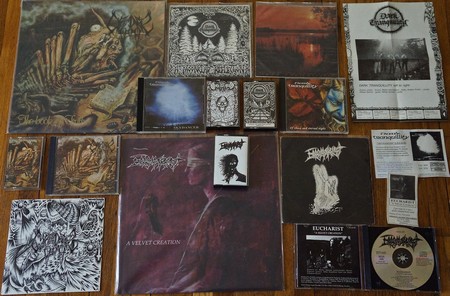
Anderson: Their influence can’t be overstated enough. Especially Eucharist and Dark Tranquillity in their earliest years. That was the era of metal I grew up with. These bands continue to inspire and leave me dumbfounded. What Dark Tranquillity did at 16 and 17, specifically with A Moonclad Reflection and Skydancer, is almost incomprehensible to me. The same with so many others. It’s as though they tapped into this sacred well that was completely unknown to anyone but them. I fear that I could bore your readers endlessly about these specific years and the bands that really meant something to me and, in general, to the whole of where metal was heading at the time. But the ending point would be that, through death metal, these guys found a way to execute incredible works incorporating a lot of other pretty bizarre influences (Alf Svennson and Niklas Sundin especially). And even though I feel that Obsequiae doesn’t fall within the style of what the majority would call “melodic death metal”, the ideas that birthed Obsequiae are the same as the ones which birthed these earlier bands. It isn’t so much that we share a similar canvas as that we draw colors from the same palette. Using death metal and heavy metal to employ the influence of other styles. Even the lyrics to Skydancer were unconventional for their day. Not just by a 17-year-old-learning-English-standard, either. This is the honest and poetic speech that engaged me when I was younger as well. “Remember these words, for they have flown from my heart!”
Dead Rhetoric: I read online that you were considering doing a complete medieval album. Is this still something you are looking into?
Anderson: It is. But it will not be under the name of Obsequiae.
Dead Rhetoric: Where did your interest in medieval music stem from?
Anderson: Growing up, my folks were into all kinds of pretty weird music. My mom is a harp player as well. I realized sometime in my teens, while taking harp lessons, that the only songs that really resonated in me were the sadder Celtic tunes like “Lord Mayo” or “Brian Boru’s March”. The most droning, sad stuff. I was always searching for that sound. Then I saw the 1928 version of “The Fall of the House of Usher”. I realized I had heard one of the Cantigas de Santa Maria before. I dug through my collection and then started raiding record stores and buying anything from labels like Harmonia Mundi & Dorian before finding other ensembles and more specific bodies of work that I admired. Then I just began taking private instruction for medieval music. That’s the short story.
Dead Rhetoric: Does Obsequiae do much time in the live venue? How does the music translate into that arena?
Anderson: Obsequiae is not a live band. Perhaps someday.












